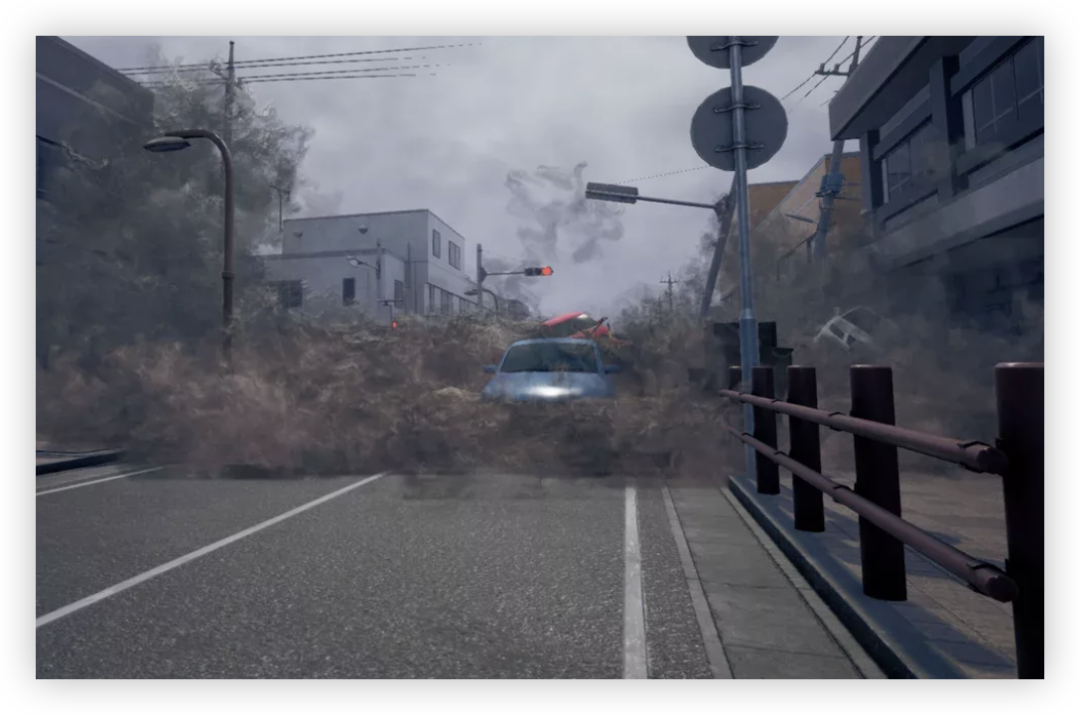VR Black Tech Arrives: Immersive Earthquake and Tsunami Experience Can Save Lives!

When disaster warnings sound, do you really know how to save yourself? Traditional disaster prevention drills often fail to recreate the immersive urgency and uncertainty of real situations. But now, VR (Virtual Reality) technology is quietly changing all of this. It not only lets us "see" disasters but also "feel" them, enabling us to make the right choices in critical moments and save lives.
Disrupting Perceptions: VR Brings Disaster Prevention Education to Life
Disaster prevention and mitigation - these four words we've heard since childhood, yet they often remain superficial. Boring lectures and mechanical drills rarely truly touch the deep reverence for disasters and survival instincts within us. However, Japan's Nohmi Bousai Corporation has partnered with gaming company Granzella to launch an innovative content called "Real Earthquake and Tsunami Experience VR - Life-Saving Choices," which is undoubtedly a bombshell dropped in the traditional disaster prevention education field.
It's not just a VR game, but a carefully designed educational tool aimed at helping us experience real disasters in advance through highly realistic scenarios in the virtual world.
This isn't their first attempt. Their previously successful "Fire Emergency Experience VR" has already accumulated over 7,000 participants, proving the enormous potential of this model. This time, they've set their sights on more destructive earthquakes and tsunamis, striving to help more people deeply embed disaster prevention awareness and survival skills into their minds through personal "adventures."
Shocking Experience: How Close Are You to Disaster?
Imagine sitting in your office when suddenly the ground shakes violently, items on your desk begin to topple, lights sway, and even smoke from fires fills the air... This is no longer movie special effects, but the realistic recreation of a magnitude 6+ earthquake scene in the "Earthquake・Tsunami Emergency Experience VR." The entire experience is compact yet shocking, lasting about 10 to 15 minutes, but condensing up to 15 different disaster scenarios to choose from. Even with limited time, you can experience 3 carefully selected condensed versions.
Moreover, it's more like an interactive "survival test." The system will timely pose questions, testing whether you can make correct judgments and actions when facing sudden situations. For example, when an earthquake occurs, do you immediately seek cover or blindly rush outside? Before a tsunami arrives, do you stay put waiting for rescue or quickly evacuate to higher ground? Each choice directly affects your "survival assessment" in the virtual world, and after the experience ends, provides a "Disaster Prevention Skills Assessment Report." This instant feedback mechanism is far more profound and effective than rote education.
From magnitude 7 main shocks to overwhelming tsunamis, this VR content seems to build a wormhole to disaster scenes. It not only recreates the physical shock but also simulates the chaos, oppression, and urgency, allowing us to rehearse life-and-death choices in advance in a safe virtual environment. This enables us to act more calmly and decisively when truly facing danger in reality.
Value Extension: Empowering Future Safety Defenses
This VR training content has broad application prospects. Whether it's daily disaster prevention training for enterprises to improve employees' emergency evacuation capabilities, or disaster prevention publicity activities organized by government agencies in communities to enhance citizens' disaster response literacy, it can play an irreplaceable role. More profoundly, it can also serve as a living textbook, passing on the painful lessons of historical disasters like the Great East Japan Earthquake to future generations in the most intuitive way. At the same time, it can also prepare psychologically and practically for potential mega-disasters like future Nankai Trough earthquakes.
If you also want to experience this disruptive disaster prevention training, or introduce this advanced educational method to your enterprise or community, Nohmi Bousai has already opened a dedicated online rental platform "XR Plus." Based on needs, you can choose rental plans ranging from 2 days, 1 month, to long-term rentals of 2 to 6 months, with costs starting from 120,000 yen. This investment buys not just cutting-edge technology experience, but powerful protection for life safety.
Conclusion
Technological progress should not merely stay at the entertainment and consumption level. When VR technology is cleverly applied to important life-safety fields like disaster prevention and mitigation, its value is infinitely magnified. Nohmi Bousai's innovative practice paints a blueprint for future disaster prevention education: it will be immersive, interactive, efficient, and full of humanistic care. Let us look forward together to cutting-edge technologies like VR playing an even greater role in protecting lives and building safety defenses.
Reference content:
https://prtimes.jp/main/html/rd/p/000000073.000085174.html
分享文章
3篇相关文章
Valve's New Trademark 'STEAM FRAME' Deep Dive: How Will It Reshape Your Gaming World?
2025-09-05
Valve quietly filed a new trademark 'STEAM FRAME' — does it herald the next‑gen home console Fremont, the revolutionary VR headset Deckard, or an entirely new gaming ecosystem?
20,000 Fans Flood Tokyo Tower! This 'No-Exit VR Horror Labyrinth' Is the Biggest Summer Hit!
2025-09-04
Tokyo Tower's VR horror attraction 'Shivering Labyrinth: Maze' drew over 20,000 visitors in under two months, showcasing the massive potential of location-based VR.
No More Suffering! VR Turns Pediatric Cancer Recovery into a Magical Adventure!
2025-08-22
VR technology is quietly changing the model of pediatric cancer recovery, turning boring training into magical journeys full of fun. Okayama University and Japan Electronics College join forces, using two innovative VR games to light up hope for children.